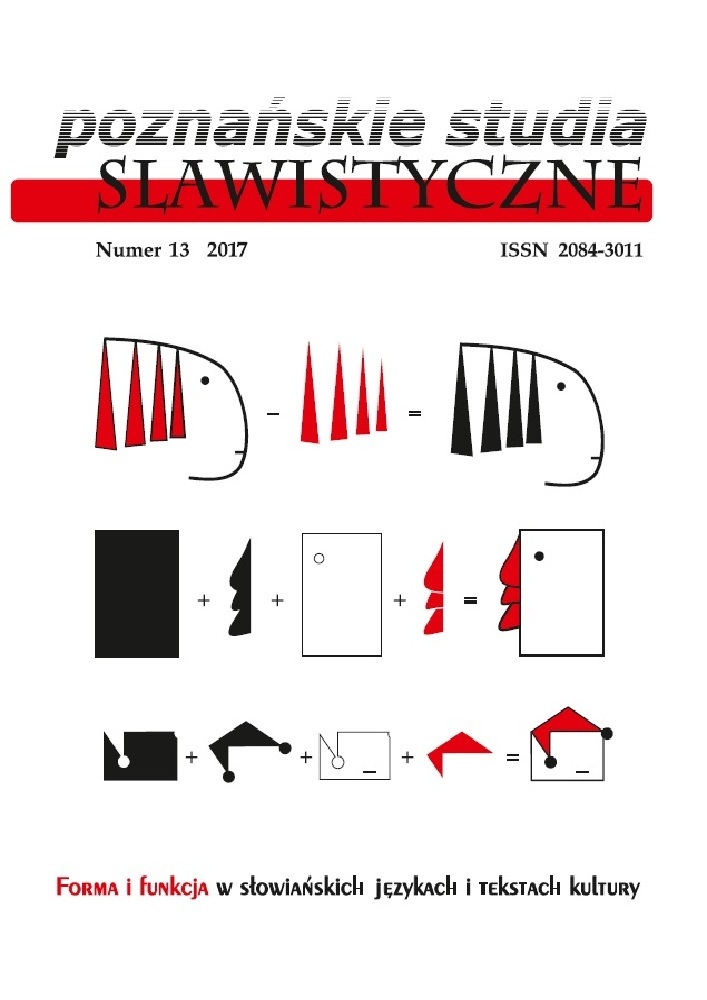Abstrakt
The paper presents relations between form and function in the architecture on few selected examples of theoretical texts. Interrelation of form and function is analyzed on examples of the most important types of baroque architecture – the castle and the church. Baroque castle has a key role in the creation and validation of the power of rulers, enfilade rooms and ceremonial staircase have function of stage on which the ruler displays himself and his power, but also at the same time, reflects strictly hierarchical social system of baroque. In religious architecture, relations between form and function are more regulated. In Instructiones… (1577) of the Council of Trent, the emphasis in the design has been placed on the fulfillment of the functions of post-Tridentine liturgy, from the layout of plan to the new meaning of the triumphal arch. However, the regulations are most clearly expressed at the end of the 18th century, in demand for functionality as the primary goal of a sacred space. Following the adoption of Enlightenment ideas in Central Europe, churches are build according to claim that their design should be “useful and purposeful”, according to the request of Joseph II.Bibliografia
Bauer, H. (1992). Barock. Kunst einer Epoche. Berlin: Dietrich Reimer Verlag.
Benedik, C. (1994). Organisierung und Regulierung des k.k. Generalbaudirektion und deren Landesstellen. „Das 18. Jahrhundert und Österreich. Jahrbuch der Österreichischen Gesellschaft zur Erforschung des 18. Jahrhunderts”, br. 9, str. 13–28.
Borromeo, C. (2011). Instructiones fabricate et supellectilis ecclesiasticae (selection). Prev. E.C. Voelker. „Art history supplement”, vol. 1, br. 2, June. http://www.artproof.co.uk/issues/issue2/voelker. 6.06.2011.
Botica, D. (2011). „Dugo 18. stoljeće” u sakralnoj arhitekturi – tipologija sakralne arhitekture u sjeverozapadnoj Hrvatskoj i Štajerskoj u drugoj polovici 18. stoljeća i na početku 19. Stoljeća. U: Neznano iz pozabljeno iz 18. stoletja na Slovenskem. Ur. M. Preinfalk. Ljubljana: Zgodovinski inštitut Milka Kosa ZRC SAZU i Slovensko društvo za proučevanje 18. stoletja, str. 167–182.
Brucher, G. (1983). Barockarchitektur in Österreich. Köln: DuMont Verlag.
Burke, P. (2009). Ludwig XIV. Die Inszenierung des Sonnenkönigs. Berlin: Wagenbach Verlag.
Cvetnić, S. (2007). Ikonografija nakon Tridentskog sabora i hrvatska likovna baština. Zagreb: FF Press.
Cvitanović, Đ. (1985). Sakralna arhitektura baroknog razdoblja, gorički i gorsko-dubički arhiđakonat. Zagreb: Društvo povjesničara umjetnosti Hrvatske.
De Zurko, E.R. (1957). Albert’s Theory of Form and Function. „Art Bulletin”, vol. 39, br. 2., str. 142–145.
Gelsinger, M. (2000). Von der Beschränkung auf das „Nothwendige, Nützliche und Zweckmäßige” Josephinischer Kirchenbau in Oberösterreich. U: Kunstjahrbuch der Stadt Linz, Linz: Nordico Stadtmuseum Linz, str. 63–98.
Gutkas, K. (1980). Die kirchlich-sozialen Reformen. U: Österreich zur Zeit Kaiser Josephs II. Ur. K. Gutkas. Melk: Katalog izložbe, str. 173–176.
Heppner, H. (1994). „Bauboom” und „Aufbruchsstimmung”, Schlagworte oder Schlüsselbegriffe zum Verständnis des 18. Jahrhunderts. „Das 18. Jahrhundert und Österreich. Jahrbuch der Österreichischen Gesellschaft zur Erforschung des 18. Jahrhunderts”, br. 9, str. 7–12.
Höpel, T. (2010). Das Modell Versailles. U: Europäische Geschichte Online (EGO). Mainz: Leibniz-Institut für Europäische Geschichte.
Jurić, M. (2004). Nacrti crkvenih zgrada u Hrvatskom državnom arhivu. Zbirka građevinskih nacrta i Zbirka planova. „Tkalčić”, br. 8, str. 511–549.
Koepf, H., Binidng, G. (2005). Bildwörterbuch der Architektur. Stuttgart: Kroener Alfred GmbH.
Kruft, H.-W. (1986). Geschichte der Architekturtheorie. Von der Antike bis zur Gegenwart. München: Verlag C.H. Beck.
Norberg-Schulz, C. (1986). Baroque Architecture. New York: Electa/Rizzoli.
O’Gorman, J.F. (1991). Three American Architects: Richardson, Sullivan, and Wright, 1865–1915. Chicago: University of Chicago Press.
Premerl, D. (2009). Glavni oltar splitske katedrale – tipologija, ikonografija i hipoteza o naručitelju. U: Sic ars depreditur arte. Zbornik u čast Vladimira Markovića. Ur. S. Cvetnić, M. Pelc, D. Premerl. Zagreb: Institut za provijest umjetnosti Filozofskog fakulteta Sveučilišta u Zagrebu, str. 419–438.
Schütze, S. (2005). Die Ausstattung von Neu-St. Peter. U: Barock im Vatikan. Kunst und Kultur im Rom der Päpste 1572–1616. Ur. F. Buranelli. Leipzig: E.A. Seemann Verlag, str. 117–138.
Šumi, N. (1961). Ljubljanska baročna arhitektura. Ljubljana: Slovenska matica.
Wittkower, R. (1982). Art and Architecture in Italy 1600–1750. London: Yale University Press, Pelican History of Art.
Licencja

Utwór dostępny jest na licencji Creative Commons Uznanie autorstwa – Bez utworów zależnych 4.0 Międzynarodowe.
